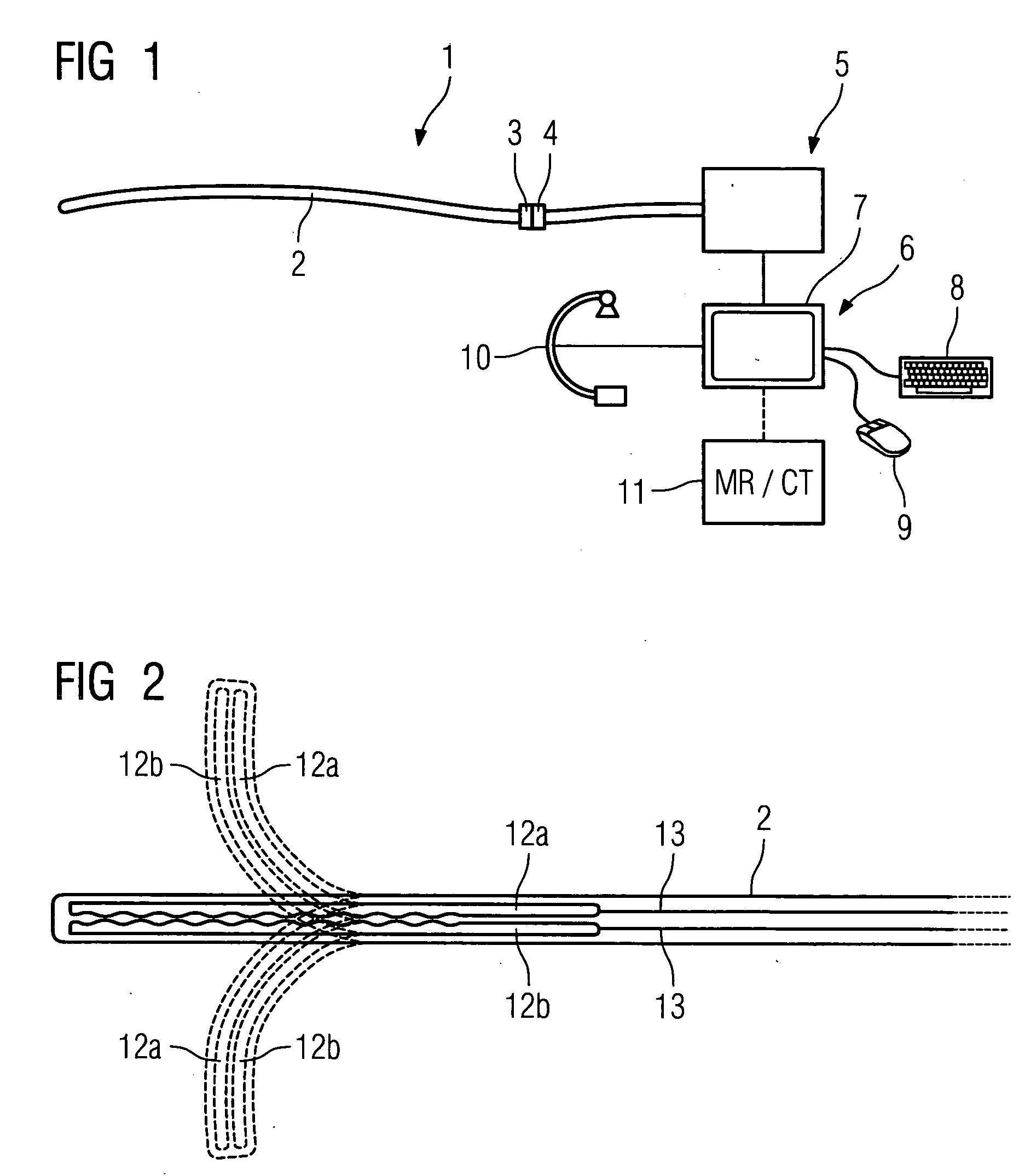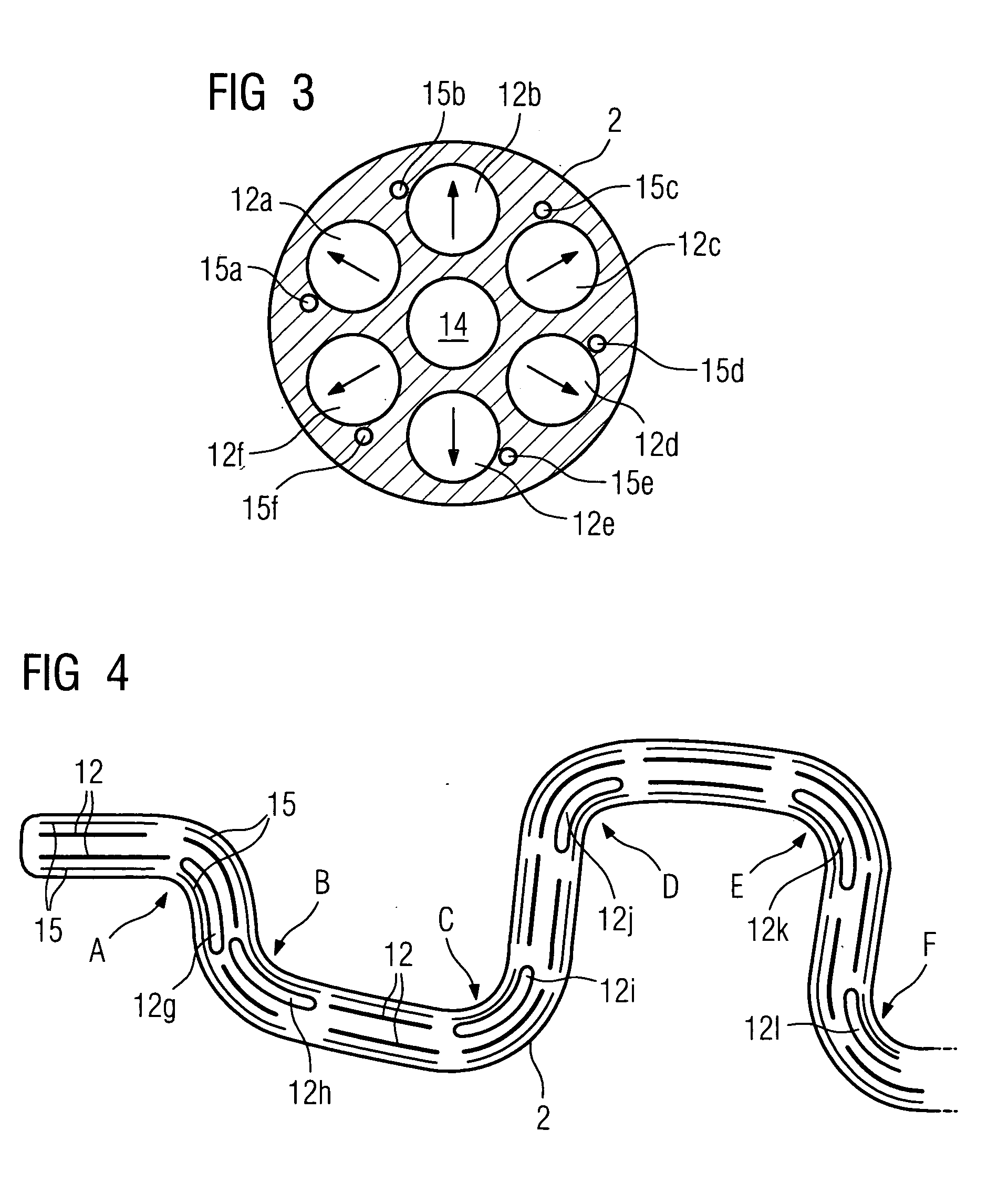Catheter device
- Summary
- Abstract
- Description
- Claims
- Application Information
AI Technical Summary
Benefits of technology
Problems solved by technology
Method used
Image
Examples
Embodiment Construction
[0023]FIG. 1 shows an inventive catheter device 1 comprising a catheter 2, at the free end of which, the end which is not to be introduced into the patient, a connection device 3 is provided, which is coupled with a connection device 4, which can be controlled by a control device 5, via which the bending elements integrated into the catheter can be controlled. It is possible via control device 5 to activate each individual bending element separately. The bending elements which are arranged distributed along the lengthwise axis of the catheter and along the catheter length are for example tubular hollow bodies to which a liquid or gaseous filler medium can be hydraulically or pneumatically applied, which in their non-loaded state are unfilled and flexible and in their filled state under pressure assume a prespecified relatively rigid shape. These make it possible to bend the catheter explicitly as described in greater detail below. The control device 5 is linked to an input device 6,...
PUM
 Login to View More
Login to View More Abstract
Description
Claims
Application Information
 Login to View More
Login to View More - R&D
- Intellectual Property
- Life Sciences
- Materials
- Tech Scout
- Unparalleled Data Quality
- Higher Quality Content
- 60% Fewer Hallucinations
Browse by: Latest US Patents, China's latest patents, Technical Efficacy Thesaurus, Application Domain, Technology Topic, Popular Technical Reports.
© 2025 PatSnap. All rights reserved.Legal|Privacy policy|Modern Slavery Act Transparency Statement|Sitemap|About US| Contact US: help@patsnap.com



